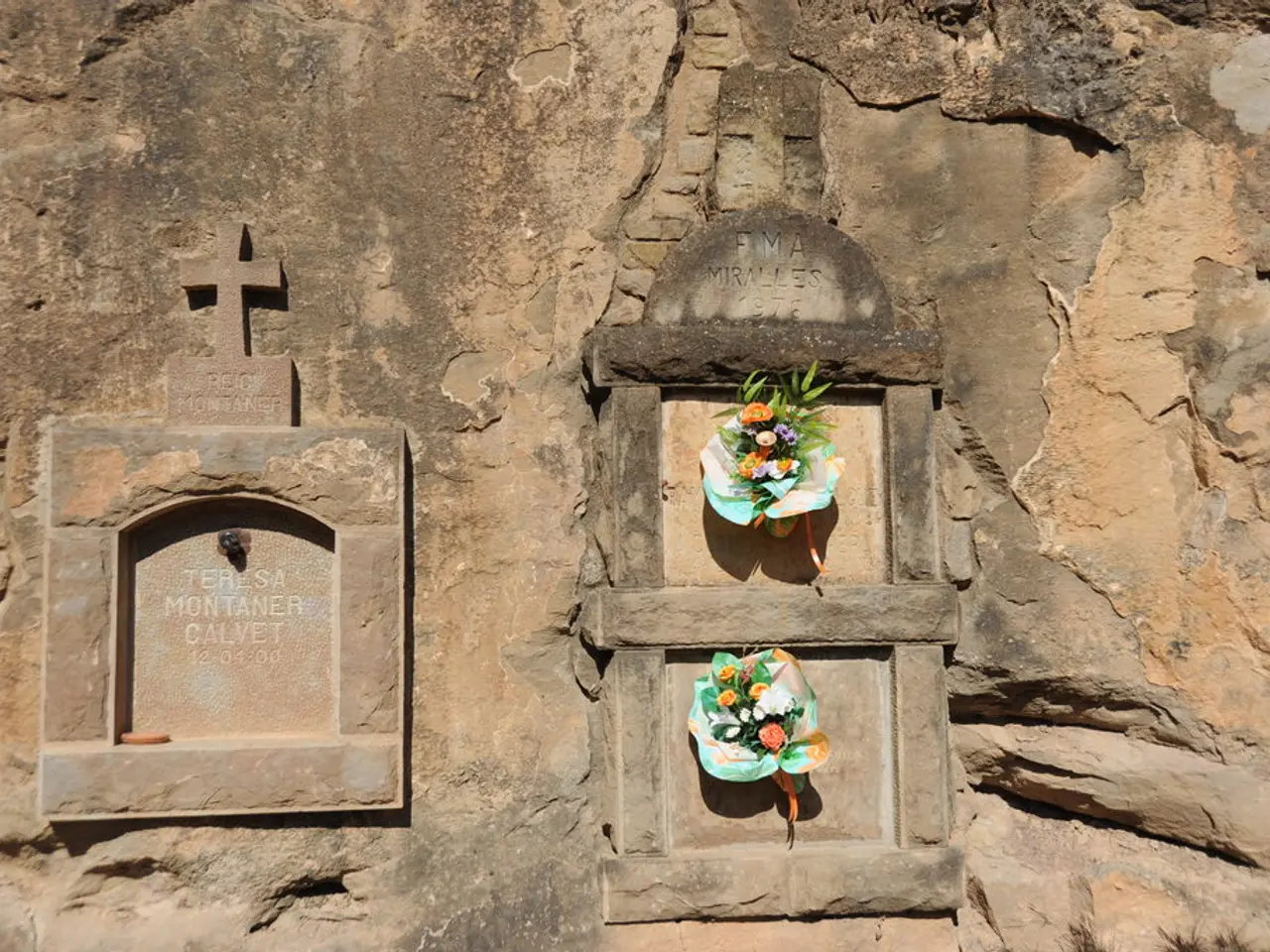Liturgical Readings for August 5, as per A.V.G.U.S.T.A. calendar.
A Dive into the History of the Basilica of Santa Maria Maggiore in Rome
The Basilica of Santa Maria Maggiore, a landmark in Rome, was consecrated on August 5, 434 AD by Pope Sixtus III. This ancient church, standing tall on the Esquiline Hill, is one of the earliest and most important Marian churches, celebrating the dogmatic recognition of Mary’s divine motherhood [1].
The basilica's construction was prompted by two separate visions of the Virgin Mary, one of which was experienced by a Roman patrician. The consecration marked the establishment of the church, which was built under Popes Celestine I and Sixtus III, soon after the Council of Ephesus in 431 [1].
The basilica is named Santa Maria della Neve, in honor of the miraculous snowfall that covered the exact area needed for the future building, as requested by the Mother of Christ [1]. It is also known as the Liberian Basilica, named after Pope Liberius. The basilica houses the first ever nativity scene made of statues, commissioned by Pope Nicholas IV in 1288 [1].
The basilica's interior is adorned with significant mosaics depicting scenes from the life of Mary and Christ, reflecting theological debates of the time. These mosaics are among the milestones in Christian art, symbolizing Rome’s role as the center of the Christian world during the early 5th century [1].
Additional historical architectural contributions were made in later centuries, including work by Giacomo della Porta and Domenico Fontana between 1518 and 1589 [5].
The basilica holds a unique place in Christian history. Jesus is said to have walked on the sea to reach the disciples, calming the wind and waves in the process [2]. The boat carrying the disciples was in the middle of the sea, tossed by the waves, with the wind against them. When the disciples got into the boat and worshiped Jesus, declaring Him to be the Son of God, the wind ceased [2].
In another instance, Jesus directed His disciples to cross over to the other side before dismissing the crowd. Peter, displaying a lack of faith, stepped out of the boat to walk on water towards Jesus, but became frightened and began to sink [3]. Jesus reached out His hand and took hold of Peter, reprimanding him for his lack of faith [3].
The basilica is the oldest Marian shrine in the West, a testament to the religious and cultural significance of the Virgin Mary in early Christianity. It continues to stand as a beacon of faith and history, offering a glimpse into the early days of Christianity in Rome.
[1] "Basilica di Santa Maria Maggiore." Vatican Museums. https://www.museivaticani.va/content/museivaticani/en/musei/santa-maria-maggiore.html
[2] "Jesus Calms the Storm." Bible Gateway. https://www.biblegateway.com/passage/?search=Mark+4%3A35-41&version=NIV
[3] "Peter Walks on Water." Bible Gateway. https://www.biblegateway.com/passage/?search=Matthew+14%3A22-33&version=NIV [5] "Basilica di Santa Maria Maggiore." Roma Capitale. https://www.roma.capitale.it/roma-capitale/it/cultura-e-patrimonio/sito-archaeologico/basilica-di-santa-maria-maggiore
In sharp contrast to the historical account of the Basilica of Santa Maria Maggiore, one might envision a modern-day family enjoying a tranquil evening at home, discussing their day's events as they appreciate the simple beauty of a home-and-garden lifestyle, perhaps sipping tea near their living-room windows, offering a view of blooming roses, mirroring the early Christian mosaics bearing scenes from Mary and Christ's life. As night descends, they might marvel at the stars, their twinkling lights reminiscent of those ancient celestial visions that sparked the construction of the basilica so many centuries ago.




